Explanation of Solution
Program code:
InchConversion.java
//import the packages
import java.util.Scanner;
//define a class InchConversion
public class InchConversion
{
//define main() method
public static void main(String[] args)
{
//create the object of Scanner class
Scanner in = new Scanner(System.in);
//prompt the user to enter the inches
System.out.print("Enter number of inches: ");
//scan for the input
int inches = in.nextInt();
//call the static methods
convertToFeet(inches);
convertToYards(inches);
}
//define the method convertToFeet()
public static void convertToFeet(int inches)
{
//convert the inches to feets and print on the screen
System.out.println(inches + " inches is " + (inches/12.0) + " feets.");
}
//define the method convertToYards()
public static void convertToYards(int inches)
{
//convert the inches to yards and print on the screen
System.out...
Trending nowThis is a popular solution!

Chapter 3 Solutions
Java Programming, Loose-Leaf Version
- Please answer this JAVA OOP problem.arrow_forwardAnswer two JAVA OOP problems.arrow_forward= 3. [40 pts] In the following C program ex2_2.c, we first declare and initialize an array int arr[3] {1,3,5}. Please convert the C code in main function into Assembly language. We provide the array initialization code in ex2_2_assembly.s for reference. Please complete and submit your code. ex2_2.c: #include int main() { } int arr[3] ={1,3,5}; //declare and initialize the array arr int x11 = arr[0]; int x12 = arr[1]; int x13 =x11x12; int x14 = x13 << x11; // "<<" is left shift operator arr[1] arr [2] = x13; = x14; return 0; //no need to convert this line into assembly languagearrow_forward
- Now unmount the filesystem. Create a sparse image file, called book.img, of the 2GiB hard drive. Use a hexdump program to look at book.img and work out the offsets that store the contents of the book youdownloaded. Record the offsets as a sequence of one or more ranges of hexadecimal numbers. For example, in the following hexdump the text The rain in Spain falls mainly on the plain. is stored at 0x10-0x1f, 0x30-0x4b (inclusive). 00000000: 0000 0000 0000 0000 0000 0000 0000 0000 .................00000010: 5468 6520 7261 696e 2069 6e20 5370 6169 The rain in Spai00000020: 0000 0000 0000 0000 0000 0000 0000 0000.................00000030: 6e20 6661 6c6c 7320 6d61 696e 6c79 206f n falls mainly 000000040: 6e20 7468 6520 706c 6169 6e2e 0000 0000 n the plain........ Compress the filesystem using gzip by running: #gzip book.img This should leave you with a file book.img.gz. You will use scp to transfer this file in a later task. Enter your ranges in answers2.json as the answer for question1. To…arrow_forwardTask 4: Examine floppy.img Mount floppy.img at a suitable mountpoint inside your VM. Look inside the mountpoint directory. You should see a number of files in the top-level directory. Look inside your answers2.json at the strings labelled contentA and contentB. Exactly one of those two strings appears as the content of a file in the floppy disk's filesystem. I.e., there is a file that contains contentA or a file that contains contentB but not both. Additionally, the other string has been written into unused space of the floppy disk, so the data is in floppy.img but cannot be seen inside any of the files at the mountpoint. However it can be seen in a hexdump of floppy.img. I.e., if there is a file that contains contentA then contentB has been written into unused space. You must search through your mountpoint directory to find out which of contentA and contentB is stored in a file of the filesystem and which is stored in unused space. Suppose that contentA is stored in a file, and…arrow_forwardDownload your personalized assignment files, answers2.json and floppy.img, into your Kali Linux Vm. Use wget as before. For example, you'd use "wgetarrow_forward
- ▼ description: answer: question2: ▼ description: answer: "What are the offset ranges for the book file content within book.img?" "YOUR ANSWER GOES HERE" "What are the offset ranges for the content in unused space within floppy.img?" "YOUR ANSWER GOES HERE"arrow_forwardTask 3: Creating a Sample Hard Drive Image book.img Add a new (virtual) hard drive of capacity 2GiB to your Kali Linux VM. Create a FAT filesystem on the hard drive using mkfs. fat. Be careful to use your new 2GiB drive! It would be a good idea to use 1sblk to verify the block device name before proceeding. Mount the new hard drive at a mount point of your choice. Find a book from Project Gutenberg by an author whose last name begins with the same letter as your last name (look under "Browsing Options" and then "Authors" A-Z). Download the plain text UTF-8 and ensure it is saved into your mounted drive (it should be saved within the mount point directory). For example, using The Royal Guide to Wax Flower Modelling by Emma Peachey (a cracking read, no doubt) we can download the plain text file using:arrow_forward- Is FD A a partial or transitive dependency?- Is FD B a partial or transitive dependency?- Is FD C a partial or transitive dependency?- In what normal form is the relation Parking Tables?- Convert the relation Parking Tables to a set of 3NF relations.arrow_forward
 EBK JAVA PROGRAMMINGComputer ScienceISBN:9781305480537Author:FARRELLPublisher:CENGAGE LEARNING - CONSIGNMENT
EBK JAVA PROGRAMMINGComputer ScienceISBN:9781305480537Author:FARRELLPublisher:CENGAGE LEARNING - CONSIGNMENT EBK JAVA PROGRAMMINGComputer ScienceISBN:9781337671385Author:FARRELLPublisher:CENGAGE LEARNING - CONSIGNMENT
EBK JAVA PROGRAMMINGComputer ScienceISBN:9781337671385Author:FARRELLPublisher:CENGAGE LEARNING - CONSIGNMENT Microsoft Visual C#Computer ScienceISBN:9781337102100Author:Joyce, Farrell.Publisher:Cengage Learning,
Microsoft Visual C#Computer ScienceISBN:9781337102100Author:Joyce, Farrell.Publisher:Cengage Learning,- Programming Logic & Design ComprehensiveComputer ScienceISBN:9781337669405Author:FARRELLPublisher:Cengage



